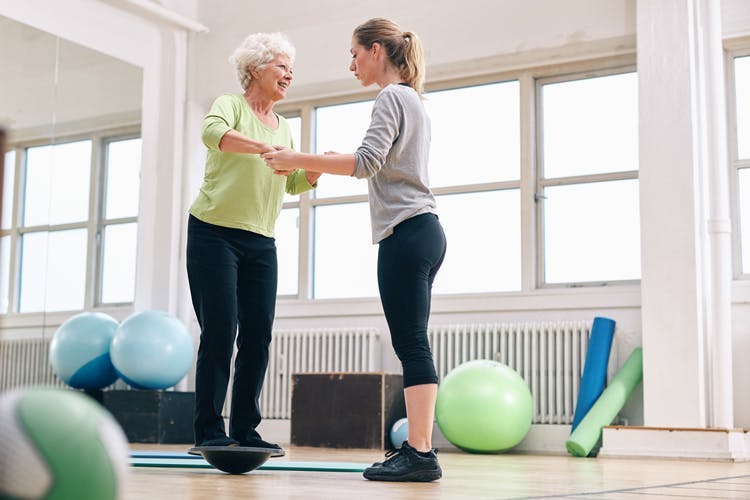Rebuilding After Stroke: Physical, Occupational, Speech & Cognitive Therapy
Share IT

Launch Your Dream Website with Us!
Click Here to Get in touch with Us.
Categories
Stroke Rehabilitation Therapies – Regaining
The Path to Healing: Therapies for Stroke Rehabilitation
Strokes affect brain function and can cause permanent disabilities in victims, making them one of the world’s top causes of disability. Nevertheless, even after a stroke, the brain may rearrange and make new connections due to its extraordinary plasticity. Utilizing this plasticity and assisting individuals in regaining lost abilities and functions is made possible through stroke rehabilitation. This blog post examines the several rehabilitation treatments that are frequently administered following a stroke, including cognitive, occupational, speech, and physical therapy.
Thank you for reading this post, don't forget to subscribe!Table of Contents

Physical Therapy for Strengthening and Function Restoration
The cornerstone of stroke rehabilitation is physical therapy. It emphasizes enhancing:
- Strength and coordination of the muscles: Exercises work on weaker muscles to increase range of motion.
- Gait and balance: Therapists assist patients in regaining their equilibrium and practicing safe walking.
- Range of motion: To avoid stiffness, exercises preserve or increase joint flexibility.
- Pain management: PTs can use a variety of methods to assist in the management of pain.
Stroke Rehabilitation Therapies – Regaining
Physical therapy is frequently tailored to the patient’s needs and the particular areas of the stroke that are impacted. This could be rehearsing movements like getting out of bed and into a chair, gait training, or strengthening exercises for particular muscle areas.
Occupational Therapy: Regaining Independence Through Everyday Activities
The goal of occupational therapy is to assist patients in regaining their independence in carrying out activities of daily living (ADLs). This comprises:
- Self-care duties: include grooming, dressing, bathing, and using the restroom.
- Home management: includes budgeting, cleaning, and meal preparation.
- Work skills: Retraining and adapting to carry out duties associated with the job in a safe and effective manner.
Stroke Rehabilitation Therapies – Regaining
Occupational therapists evaluate a person’s surroundings and recommend changes to make everyday chores safer and easier. They might also contribute to the creation of techniques or assistive technology to make up for the restrictions brought on by the stroke.
Speech Therapy for Restoring Communication
Stroke Rehabilitation Therapies – Regaining
Speech therapy is essential in assisting people in recovering from stroke-related communication problems, such as:
- Aphasia: inability to comprehend or produce spoken words (aphasia).
- Dysarthria: Speech clarity is affected by weak muscles.
- Speech apraxia: is the inability to organize and coordinate the movements necessary to produce speech.
Speech-language pathologists employ a range of methods to enhance communication abilities, including:
- Exercises for language stimulation: Get comfortable naming things, describing images, and carrying on conversations.
- Speech sound drills: enhancing speech clarity and articulation.
- Strategies for augmentative and alternative communication (AAC): Using tools or communication technologies to facilitate expressiveness in the event that verbal communication is still difficult.
Developing Mental Acuity: Cognitive Rehab
Stroke Rehabilitation Therapies – Regaining
The goal of cognitive rehabilitation is to enhance stroke-related cognitive deficiencies like:
- Memory issues: Having trouble recalling details or creating new memories.
- Attention deficit disorder: Inability to concentrate or stay focused.
- Issues related to planning: problem-solving, and decision-making are known as executive function difficulties.
Stroke Rehabilitation Therapies – Regaining
To address these regions, cognitive rehabilitation therapists employ particular exercises and techniques, such as:
- Memory training techniques: Acquiring knowledge about methods to enhance memory retention and recall.
- Exercises for retraining the attention: Activities that improve concentration and focus.
- Executive function training: Training for executive function involves applying problem-solving, organization, and planning techniques to real-world scenarios.
A Wholesome Method: Integrating Treatments
Stroke Rehabilitation Therapies – Regaining
The best outcomes for stroke recovery come from combining various therapies into a customized plan. Therapists collaborate to address each person’s unique set of issues.
Every person’s journey toward rehabilitation is different, and the length and intensity of treatment will vary based on the individual’s development and the severity of the stroke. However, stroke rehabilitation can greatly enhance a person’s quality of life and assist them in regaining their independence provided they put in the necessary time and effort.
Keep in mind that recovering from a stroke is a continuous process. While it can take months or even years to fully heal, early intervention is essential. Throughout this journey, the support of family, friends, and healthcare professionals is crucial.

Launch Your Dream Website with Us!
Click Here to Get in touch with Us.





























































Recent Comments